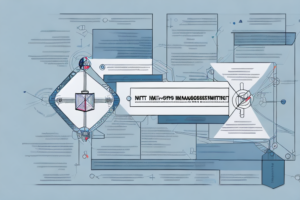How do you assess risk management framework?
8 min read
A risk management framework
In today’s business environment, risk management has become an integral part of any organization’s success. Implementing a risk management framework helps in identifying potential risks and hazards, developing a risk management plan, and ultimately managing and mitigating risks. Assessing an organization’s risk management framework is critical to ensuring that the framework is effective in ensuring the organization’s success. In this article, we will cover the key components of a risk management framework, identifying potential risks and hazards, developing a risk management plan, and implementing a risk management framework. We will also discuss best practices and pitfalls to avoid, techniques and methodologies to consider when conducting a risk assessment, and how to measure the effectiveness of your risk management framework.
Understanding the importance of risk management in today’s business environment
Risk management is not a new concept, but its importance has increased significantly in today’s business environment. With the rise of globalization, advancements in technology, and the ever-changing economic climate, organizations are exposed to a wide range of risks that could adversely affect their operations. Failing to identify and mitigate these risks can lead to financial losses, reputational damage, legal issues, and more. Therefore, implementing a risk management framework is no longer an option, but a necessity.
One of the key benefits of implementing a risk management framework is that it helps organizations to be proactive rather than reactive. By identifying potential risks and developing strategies to mitigate them, organizations can avoid or minimize the impact of these risks on their operations. This not only helps to protect the organization’s financial and reputational assets but also helps to build resilience and agility in the face of unexpected events.
Another important aspect of risk management is that it helps organizations to comply with regulatory requirements. Many industries are subject to strict regulations and failing to comply with these regulations can result in hefty fines and legal issues. By implementing a risk management framework, organizations can ensure that they are meeting regulatory requirements and avoiding any potential legal issues that may arise from non-compliance.
The key components of a risk management framework
A risk management framework comprises several key components that work together to identify, assess, and mitigate risks. The framework typically includes policies, procedures, and processes that govern risk management activities. The components of a risk management framework include:
- Risk identification
- Risk assessment
- Risk mitigation
- Risk monitoring and reporting
- Regular review and update of the risk management framework
The risk identification process involves identifying potential risks and hazards that could affect the organization. Risk assessment involves evaluating the likelihood and impact of each identified risk and prioritizing them based on their level of risk. Once the risks are identified and assessed, the organization can develop and implement a risk mitigation plan to address the identified risks. Risk monitoring and reporting are critical to track the effectiveness of the risk management activities and to identify any new risks that may arise.
Identifying potential risks and hazards in your organization
The first step in assessing the effectiveness of your risk management framework is identifying potential risks and hazards in your organization. These can be internal or external risks that could affect your organization’s operations, reputation, or financial stability. Some examples of potential risks and hazards are:
- Financial risks – such as market risk, credit risk, liquidity risk, and operational risk.
- Regulatory and compliance risks – such as legal and regulatory non-compliance, lack of adherence to industry best practices, and reputational damage from violations.
- Human resources risks – such as employee turnover, skill gaps, absenteeism, and workplace conflicts.
- Environmental risks – such as natural disasters, climate change, and pollution.
- Cybersecurity risks – such as data breaches, cyber-attacks, and system failures.
Identifying and categorizing potential risks and hazards in your organization allows you to prioritize them and allocate resources to mitigate them based on their level of risk.
Developing a risk management plan for your organization
Once you identify the potential risks and hazards in your organization, the next step is to develop a risk management plan. The risk management plan outlines the strategies and measures that an organization will take to mitigate, transfer, or accept identified risks. It includes:
- Risk identification and assessment methodology
- Risk response strategies
- Risk mitigation measures and activities
- Risk monitoring and reporting procedures
- Roles and responsibilities of the risk management team
The risk management plan should align with the organization’s mission, vision, and goals while taking into account its resources and risk appetite.
Implementing a risk management framework – Best practices and pitfalls to avoid
Implementing a risk management framework requires careful planning, execution, and monitoring. Here are some best practices to follow:
- Ensure the buy-in of senior management and stakeholders.
- Provide adequate resources and budget for risk management activities.
- Enable a risk-aware culture within the organization. Empower employees to report risks and hazards.
- Implement robust communication and reporting procedures to ensure transparency and accountability.
- Ensure proper documentation and record-keeping of all risk management activities.
- Regularly review and update the risk management framework to reflect changes in the organization’s risk profile, regulatory environment, or industry norms.
Some common pitfalls to avoid when implementing a risk management framework are:
- Not involving all relevant stakeholders in the risk management process, which could lead to oversight of key risks.
- Implementing a ‘one-size-fits-all’ approach to risk management, which ignores the unique risk profile of the organization and its industry norms.
- Underestimating the resources and budget required to implement a robust risk management framework.
- Not providing adequate training and support to employees involved in the risk management process.
- Ignoring the importance of regular review and update of the risk management framework.
Conducting a risk assessment – Techniques and methodologies to consider
Risk assessment is a critical component of a risk management framework. It involves evaluating the likelihood and impact of identified risks and prioritizing them based on their level of risk. There are several techniques and methodologies that organizations can use to conduct risk assessments. Some popular methods include:
- Hazard analysis and critical control points (HACCP)
- Fault tree analysis (FTA)
- Bowtie analysis
- SWOT analysis
- ISO 31000 risk assessment methodology
The choice of technique or methodology depends on factors such as the organization’s risk profile, resources, and objectives.
Measuring the effectiveness of your risk management framework – Key performance indicators to track
Measuring the effectiveness of your risk management framework is crucial to ensuring that it achieves its intended objectives. Here are some key performance indicators (KPIs) that you can track:
- Number of risks identified and assessed
- Number of risk response strategies implemented
- Percentage of risks mitigated or transferred
- Frequency and quality of risk monitoring and reporting
- Level of risk awareness and involvement of employees
- Resolution time of risk issues
Measuring and tracking KPIs allows organizations to identify gaps, areas for improvement, and to make informed decisions to enhance the effectiveness of their risk management framework.
The role of technology in modern day risk management – Tools and platforms to consider
The use of technology in risk management has become increasingly prevalent. There are several tools and platforms that organizations can use to enhance their risk management activities. Some of these technologies include:
- Risk management software
- Business intelligence and data analytics tools
- Enterprise risk management (ERM) platforms
- Cloud-based risk management tools
- Artificial intelligence and machine learning algorithms
The choice of technology depends on factors such as the organization’s risk profile, resources, and objectives.
Overcoming common challenges in implementing a risk management framework
Implementing a risk management framework is not without its challenges. Some common challenges that organizations encounter include:
- Insufficient budget and resources to implement comprehensive risk management activities.
- Resistance to change and reluctance to adopt risk management practices.
- Difficulty in quantifying and prioritizing risks.
- Lack of communication and transparency between stakeholders.
- Insufficient skills and knowledge among employees to adequately perform risk management activities.
Organizations can overcome these challenges by ensuring executive buy-in, implementing a risk-aware culture, providing training and support to employees, and implementing communication and reporting procedures that promote transparency and accountability.
Balancing risk and reward – How to make informed decisions based on your organization’s appetite for risk
Organizations must strike a balance between risk and reward to achieve their objectives. The level of risk that an organization is willing to accept is known as its appetite for risk. The appetite for risk varies between organizations and can depend on factors such as the organization’s size, industry, and strategic objectives. Organizations can balance risk and reward by adopting a risk-based decision-making approach, which involves:
- Identifying and assessing potential risks and hazards.
- Evaluating the potential impact and cost of mitigating these risks.
- Determining the organization’s appetite for risk
- Making informed decisions based on the analysis of risks and corresponding rewards.
This approach helps organizations to avoid making decisions based on guesswork or uninformed assumptions.
Case studies of successful organizations with robust risk management frameworks
Several organizations have successfully implemented and maintained effective risk management frameworks. Some of these organizations include:
- Procter & Gamble: The company has a risk management framework that focuses on identifying operational risks and ensuring their effective management.
- Microsoft: The company has an enterprise-wide risk management framework that integrates all business functions and risk management activities.
- Walmart: The company has an integrated risk management framework that aligns its strategic objectives with its risk management activities.
These organizations’ frameworks are comprehensive, integrated with their overall strategy, and supported by executive leadership, among other things.
Raising awareness among employees about the importance of risk management
Risk management is not solely the responsibility of the risk management team. Employees at all levels of the organization play a crucial role in identifying and reporting risks. Therefore, it is essential to raise awareness among employees about the importance of risk management. Some ways of raising awareness include:
- Training and development programs to equip employees with the skills and knowledge to carry out their risk management responsibilities.
- Regular communication and reporting procedures to promote transparency and accountability.
- Incentivization programs that reward employees for identifying potential risks and hazards.
- Embedding a risk-aware culture within the organization.
These initiatives ensure that employees understand the organization’s risk management framework and take ownership of their roles and responsibilities in managing risks.
Key considerations while communicating about risks with stakeholders
Effective communication is crucial in managing risks. When communicating about risks with stakeholders, there are several key considerations to keep in mind:
- Transparency and clarity of communication
- Timeliness of communication
- Alignment with the organization’s mission, vision, and goals
- Adaptation to the audience’s knowledge level and needs
Effective communication ensures that stakeholders understand the risks involved, the measures being taken to manage them, and the potential impact of the risks on the organization. It also promotes transparency and accountability, ultimately enhancing the organization’s reputation and trust among stakeholders.
Assessing the effectiveness of your risk management framework requires careful planning, execution, and monitoring. By identifying potential risks and hazards, developing a risk management plan, implementing a risk management framework, tracking KPIs, and communicating effectively with stakeholders, organizations can mitigate risks, ensure their sustainability, and achieve their objectives.



